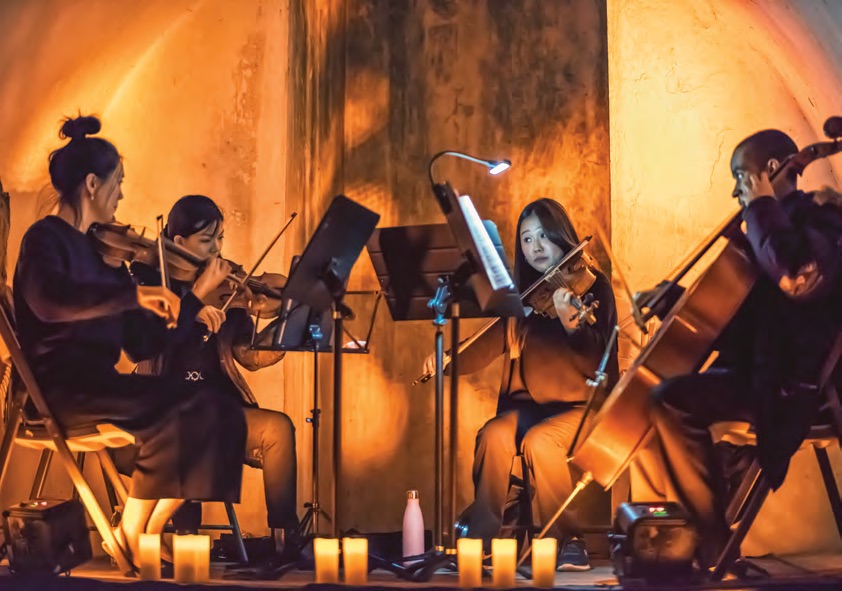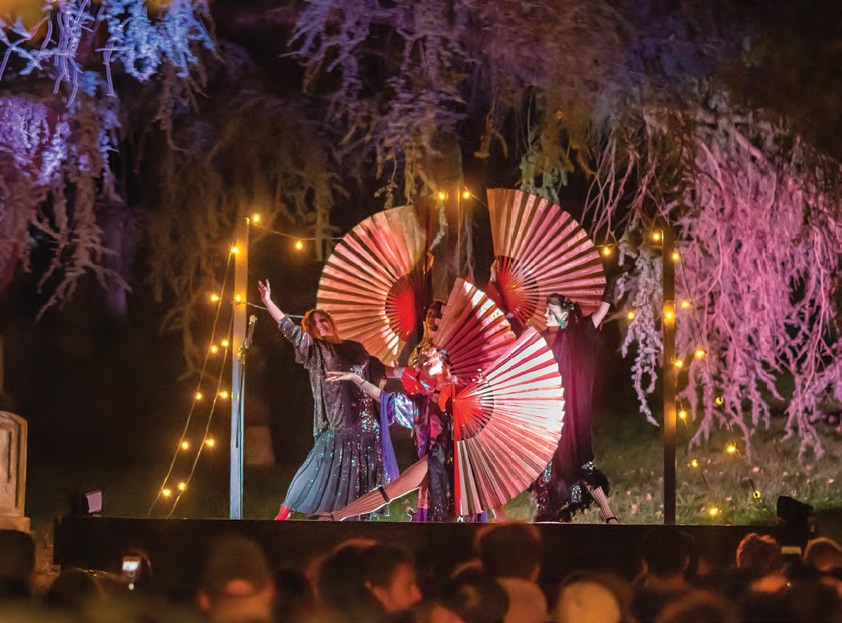Photography by Maike Schulz
As the sun sets on a crisp October evening, a line begins to form outside the gates of Brooklyn’s Green-Wood Cemetery. People gather in small groups teeming with excited energy and peer through the gates, craning their necks to catch an early glimpse of what lies beyond the fence. The sound of live jazz from a bygone era wafts invitingly from somewhere inside the graveyard. Thousands of flickering candles create a pathway up the winding road, disappearing over the edge of the hill. The moon, silvery and almost full, illuminates the massive Gothic archway that marks the entrance to Green-Wood. At eight o’clock sharp, the gates swing open and Nightfall officially begins.
A collaborative effort between the cemetery’s staff and an eclectic group of performance artists, storytellers, musicians, and filmmakers, Nightfall is just one of the impressive events that takes place in Green-Wood each year. For unabashed lovers of the macabre like myself, Green-Wood’s programming is a siren song. Particularly enchanting is the Angel’s Share concert series, which features a rotating set of classical concertos and operas in the catacombs. At a recent opera performance of The Rose Elf, adapted from Hans Christian Andersen’s fairy tale, guests sat among candles and flowers while the performers ran up and down the narrow catacomb, darting in and out of the vaults as petals fell in showers through the open skylights.
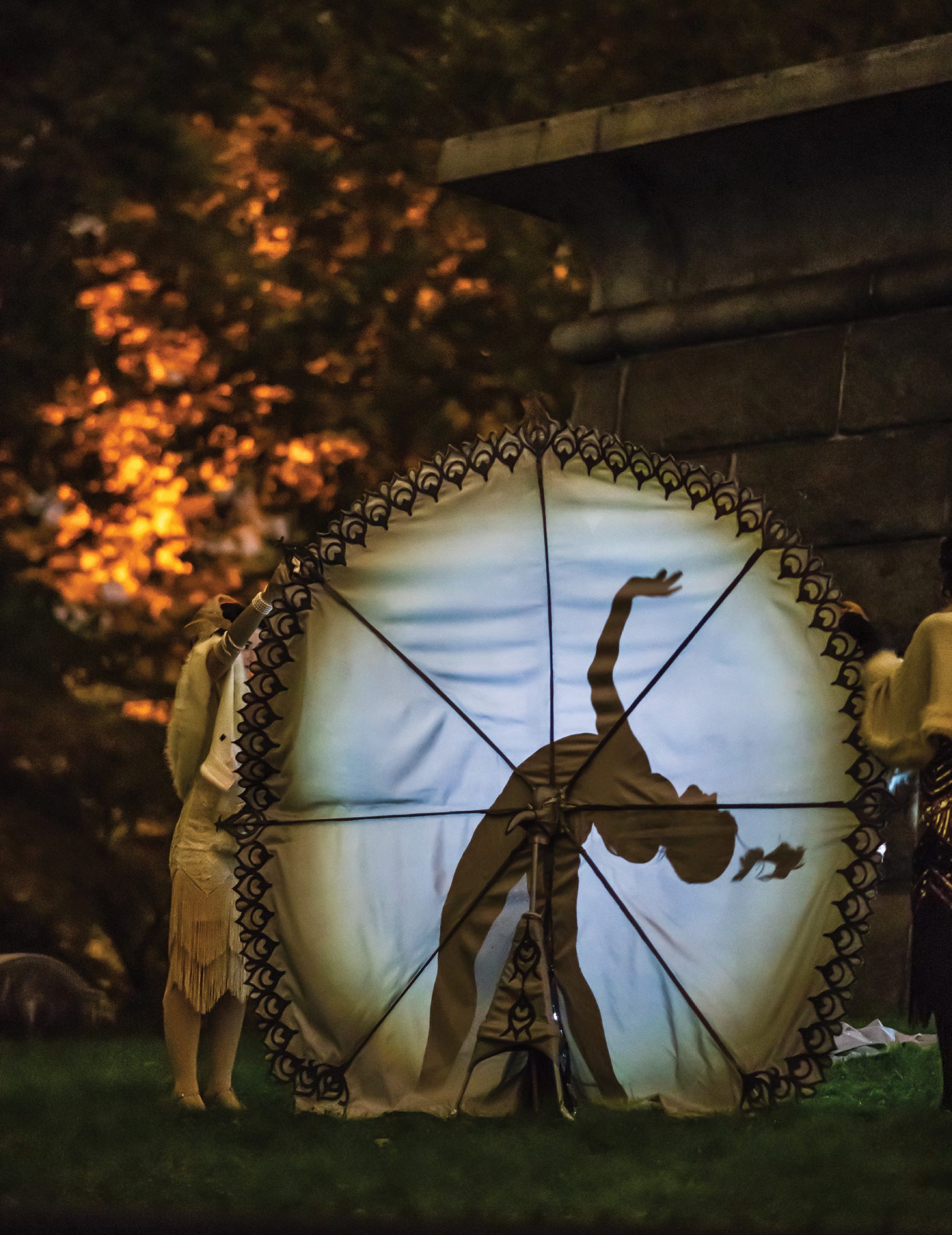
Green-Wood was founded in 1838 and quickly became the most coveted burial ground for well-to-do New Yorkers in the 19th and 20th centuries. Long before the creation of Central Park and Prospect Park, the rural cemetery’s 478 acres were a place for strolling, picnicking, and appreciating statuary. Twenty miles of serpentine pathways wind through the grounds, leading to a myriad of destinations. Glacial ponds, mausoleums, and ancient oaks are all tucked away in hidden corners. The eventual creation of city parks and a shift away from the memento mori spirit of the age means that Green-Wood no longer draws the same crowds it did during its Victorian heyday. Events like Nightfall invite modern New Yorkers to return to the cemetery, providing them an opportunity to rediscover the splendor of this lovely oasis in the middle of their city.
And return they do. Hundreds of partygoers mill about the grounds, drinking wine and wandering among crumbling headstones topped with glowing candles. Many attendees are adorned in whimsical, fantastical clothing. Ornate, Venetian masks cover the faces of a large group wearing cocktail attire. There is a susurrus of fallen leaves as a group of young women in long cloaks dart past me toward an unlit part of the graveyard. I drift along the twisting pathways, stopping at art and performances as I happen upon them. Singing, plaintive and lovely, comes from a group of a cappella performers in an open mausoleum. A ghostly duo slow-dances to a crackling record playing on an antique gramophone behind them.
Spellbound listeners crowd around a stage where expert storytellers regale them with true tales of the fantastical and strange. A red velvet tent hosts a rotation of speakers who lecture on the history of cursed jewels, Victorian opioids, mummified animals in ancient Egypt, and sword swallowing. A string quartet plays at the end of a candle-lined catacomb as viewers gaze on in silent wonder. In another part of the cemetery, tinkling carousel music emanates from a hand-carved band organ. A troupe from the vintage-inspired Bindlestiff Family Cirkus begin to perform among the tombstones. A princess on stilts dances slowly in the moonlight; a burlesque dancer playing the part of a tipsy flapper shimmies on a stage before retreating into the darkness.
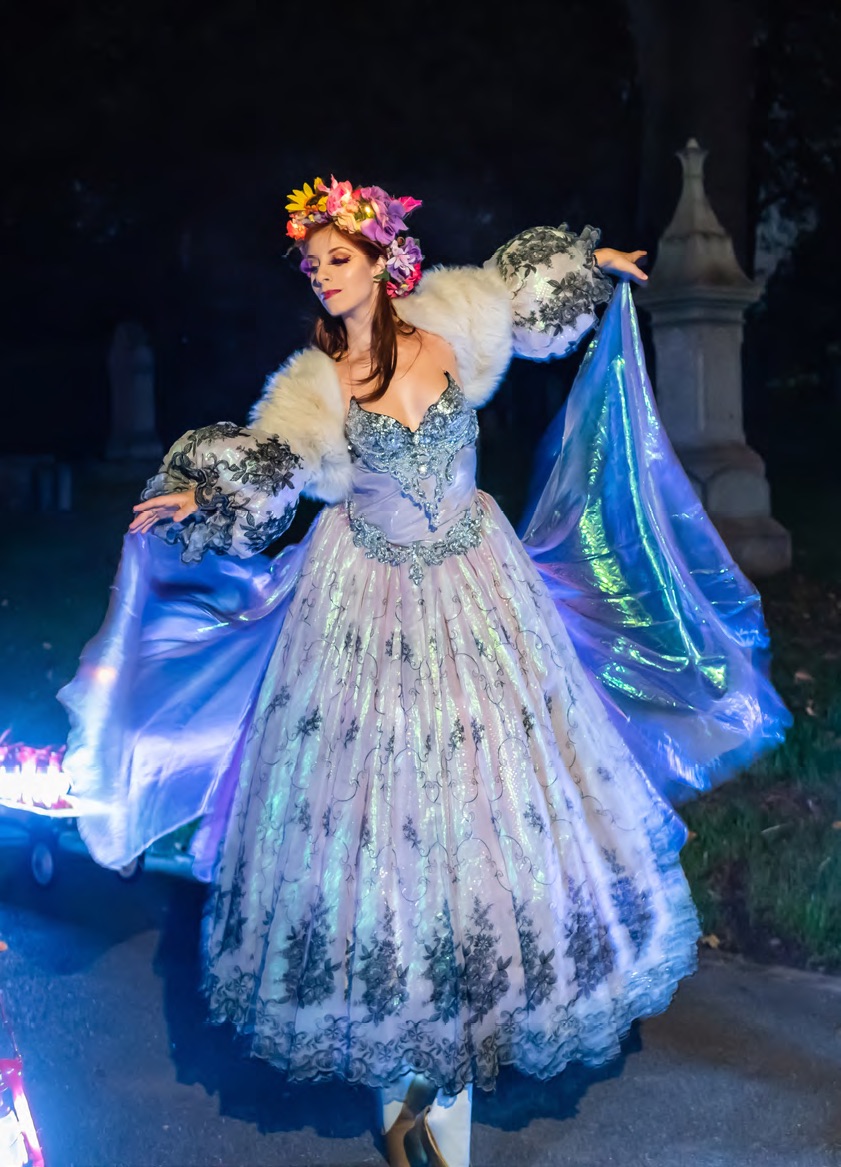
The pathways also hold treasures for guests with more solitary inclinations. A series of boxes at the feet of statues contain love letters from one of Green-Wood’s permanent residents to his lover, Jeannette, telling the story of their courtship as the reader progresses through the cemetery. Even Green-Wood’s permanent artwork is made celestial by the moonlight and candles of Nightfall. At a grave marked Marello-Volta, the statue of a giant bride weeps, clutching her bouquet as she lays across church steps. A white obelisk installed by French conceptual artist Sophie Calle has a simple inscription: “Here Lie the Secrets of the Visitors of Green-Wood Cemetery.” A hidden slit allows visitors to deposit their own confessions, literally taking their secrets to the grave.
At the edge of one of Green-Wood’s glacial ponds, visitors lounge on threadbare Turkish rugs to watch black-and-white films shown by a projector rising from the water. I sit with them and watch Man Ray’s La Retour à la Raison, reflected in the pond’s mirror-like surface. Over the crest of the hill, Manhattan’s bright skyline fills the horizon. We are in the middle of Brooklyn, yet the atmosphere of Nightfall makes it seem as if we are in another, more fantastical world entirely.
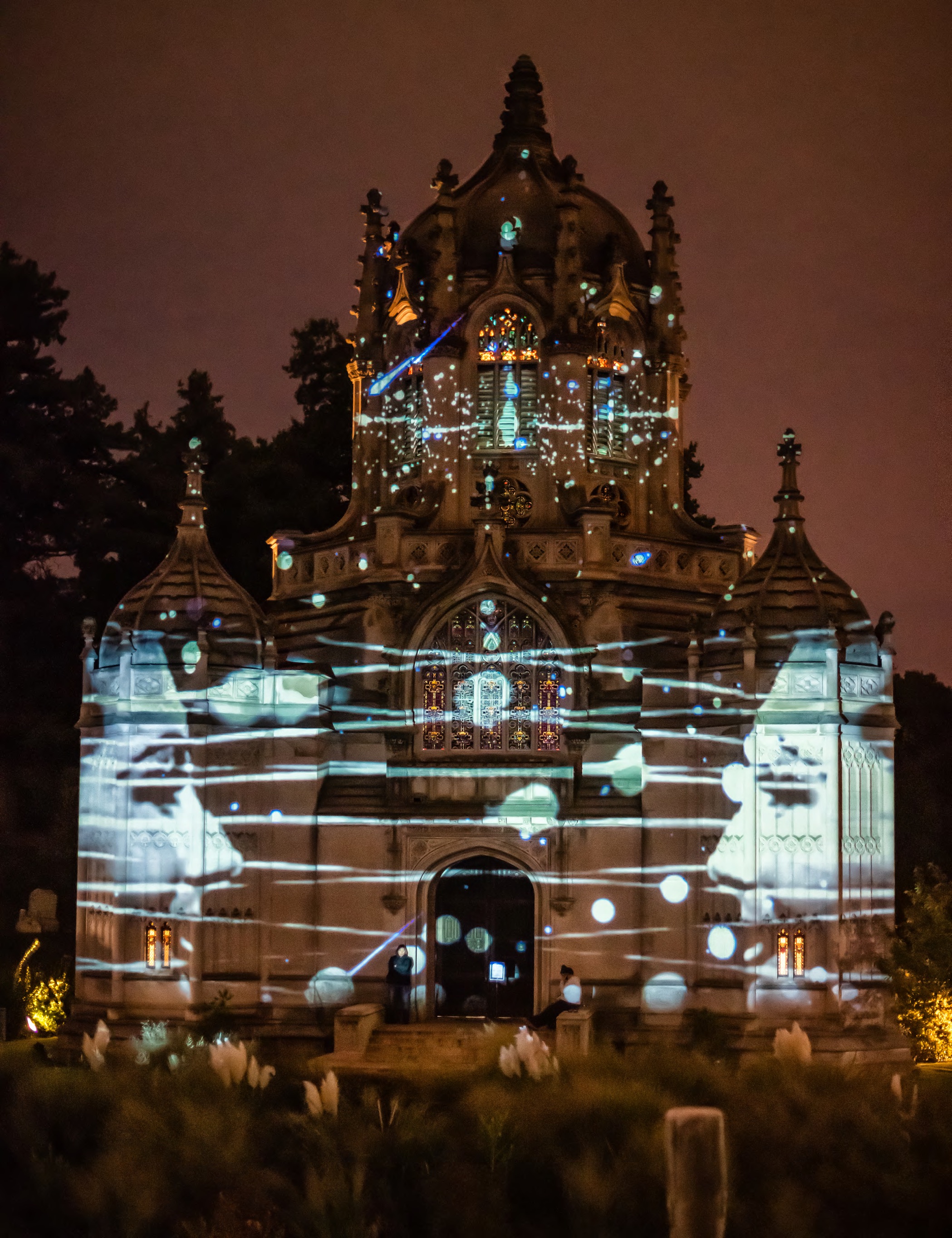
The real magic of Nightfall, and of Green-Wood itself, is the sense of mystery. The event is orchestrated to allow guests to feel as if they have stumbled upon something magical at each turn, to wonder what lies beyond the next hill. There is too much ground to cover, too much to discover for anyone to experience it all. An aura of loose narrative connects all the performances, but like a choose-your-own-adventure story, each person will leave with a different understanding of Nightfall’s tale. The spectacle of Nightfall creates a sense of timelessness. But when the clocks strike midnight, the candles will go out and Green-Wood closes its doors once more. Though we trade Turkish rugs for subway seats and exchange our cloaks for modern coats, we each take with us a piece of the enchantment from the evening. Nightfall has passed, but Green-Wood remains—a perfect place to escape the madness of the city and remember how to contemplate the magic that can be found in our everyday lives.
